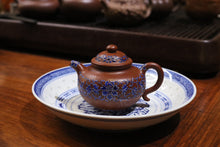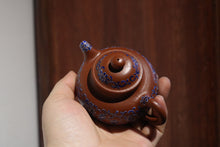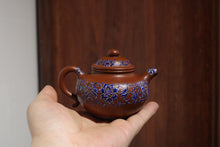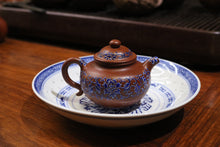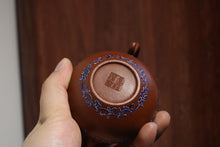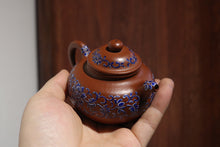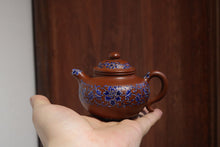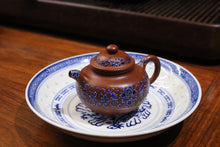
Today, I will share with you tea friends "the decorative art of purple clay pot"
Decorative arts in China have a long tradition, ranging from painted pottery in primitive times to bronze inscriptions in Shang and Zhou dynasties and mural art in Han and Tang Dynasties. Among a series of decorative arts, ceramic decoration has achieved great achievements and attracted worldwide attention. In ceramic decoration, traditional Chinese painting and calligraphy are very important. It enhances the cultural taste of ceramics and makes it have an aesthetic effect that both the refined and the popular can appreciate. And it is loved by people. Of course, the decoration of purple clay pot is no exception. Its combination with calligraphy and painting makes it achieve a high degree of practicality and artistry. , the use of "point color" craft decoration, unique, adding luster to the "sufficiently known" purple clay pot, the pattern blue and white complement each other, it is pleasing to the eye, the color is elegant and serene, and it has the power of splendor and not brilliance. , with a capacity of 150cc. During the Kangxi period of the Qing Dynasty, the original unglazed purple sand pot began to be painted with five colors. Later, enamel, pastel, multicolored and other low-temperature fusible glaze colors appeared. Flowers, landscapes, and figures were painted on the finished purple sand pot. Re-entering the red furnace and firing for the second time, blue and white decoration appeared during the Jiaqing Daoguang period, that is, the blue glaze was used as the background color, and the white glaze was used for calligraphy or painting. There is also a kind of stippling, which does not apply a bottom glaze, and uses the glaze to directly decorate the body of the pot. There is also a glaze decoration called "Lu Jun", which is to apply low-temperature lead glaze on the whole body of the purple sand body. There are delicate and dense pekoe in the sky blue glaze, which is very distinctive.








